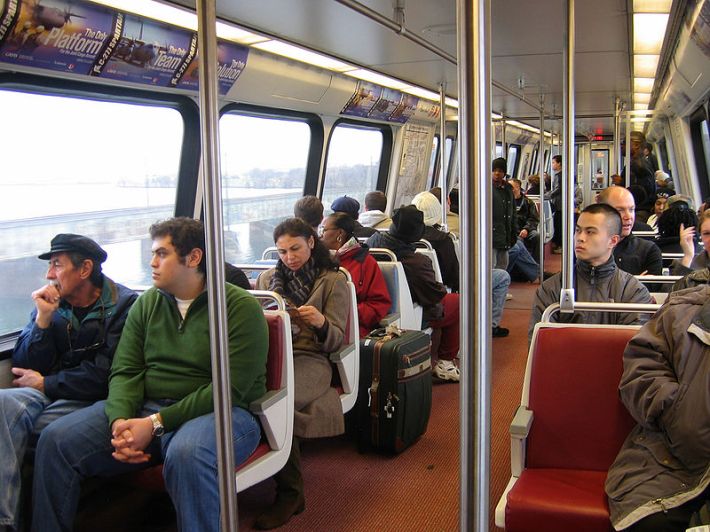
The last year transit ridership was this high in the United States, Dwight Eisenhower signed the Federal Aid Highway Act. Not since 1956, according to the American Public Transportation Association, have Americans logged as many transit trips as they did in 2013: 10.7 billion. It was the eighth year in a row that Americans have made more than 10 billion transit trips.
Growth in transit ridership is outpacing changes in driving. While total miles driven by Americans rose 0.6 percent in 2013, public transit use was up 1.1 percent.
“There is a fundamental shift going on in the way we move about our communities" said APTA President and CEO Michael Melaniphy in a press release. "People in record numbers are demanding more public transit services."
Some of the big increases were in places like Los Angeles and Salt Lake City that have been pouring resources into expanding their transit networks. L.A. saw a 4.8 percent increase in heavy rail ridership and a nearly 6 percent increase in light rail ridership, following the opening of its Expo Line in 2012. Salt Lake City, meanwhile, saw a doubling in commuter rail riders, on the heels of a significant expansion of its Frontrunner system.
Growth also occurred in cities with established train networks. Rail ridership in the New York region, for instance, grew 4.2 percent.
The positive trend, while not uniform, was widely spread. Places as diverse as Fort Myers, Florida; Cincinnati, Ohio; and Yuma, Arizona, saw sizable bumps in ridership either systemwide or on specific lines.
Heavy rail ridership recorded the strongest growth of any transit mode in 2013, with an increase of 2.8 percent, while commuter rail rose 2.1 percent. Light rail trips, including streetcars, increased by 1.6 percent. Meanwhile, bus travel was up 3.8 percent in cities with populations less than 100,000, but was down 0.1 percent overall, APTA reports.





